Follett Horizon Elite HC*1810N series Operation And Service Manual
- Category
- Ice cube makers
- Type
- Operation And Service Manual

HCD710A, HMD710A 1
HCD710A, HMD710A
Horizon Elite™ Ice Machines (Self-contained)
801 Church Lane • Easton, PA 18040, USA
Toll free (877) 612-5086 • +1 (610) 252-7301
www.follettice.com
Following installation, please forward this manual
to the appropriate operations person.
Operation and Service Manual
Order parts online
www.follettice.com
01223080R00

2 HCD710A, HMD710A
Contents
Welcome to Follett ............................................................................... 3
Before you begin ................................................................................ 3
Specications .................................................................................. 4
Operation ...................................................................................... 7
Preventive maintenance ....................................................................... 7
Weekly exterior care .......................................................................... 7
Monthly condenser cleaning (air-cooled icemaker only) .............................................. 7
Semi-annual evaporator cleaning (every 6 months) ................................................. 7
Service .......................................................................................11
Harvest system diagram .......................................................................11
Water system diagram ....................................................................... 13
Water level diagram ......................................................................... 13
Normal control board operation ................................................................ 14
DIP Switch Settings ......................................................................... 14
Error faults: ............................................................................... 15
Soft errors: ................................................................................ 15
Hard error: ................................................................................. 15
Run errors: ................................................................................ 15
Relay output indication: ...................................................................... 15
Evaporator ushing sequence: ................................................................. 15
Wiring diagram ............................................................................. 16
Mechanical System ............................................................................. 18
Reservoir/rear bushing disassembly ............................................................ 25
Refrigerant pressure data ..................................................................... 26
Refrigeration system diagram .................................................................. 26
Evacuation ................................................................................ 27
Ice capacity test ............................................................................ 27
Troubleshooting ................................................................................ 28
Replacement parts ............................................................................. 30

HCD710A, HMD710A 3
Welcome to Follett
Follett equipment enjoys a well-deserved reputation for excellent performance, long-term reliability and outstanding
after-the-sale support. To ensure that this equipment delivers the same degree of service, we ask that you review
the installation manual (provided as a separate document) before beginning to install the unit. Our instructions are
designed to help you achieve a trouble-free installation. Should you have any questions or require technical help at
any time, please call our technical service group at (877) 612-5086 or +1 (610) 252-7301.
Before you begin
After uncrating and removing all packing material, inspect the equipment for concealed shipping damage. If
damage is found, notify the shipper immediately and contact Follett LLC so that we can help in the ling of a claim,
if necessary.
Check your paperwork to determine which model you have. Follett model numbers are designed to provide
information about the type and capacity of Follett equipment. Following is an explanation of the different model
numbers in the series.
CAUTION
• Warranty does not cover exterior or outside installations.
• Moving parts. Do not operate with front cover removed.
• Hot parts. Do not operate with cover removed.
• To reduce risk of shock, disconnect power before servicing.
• Drain line must not be vented.
• Water supply must have particle ltration.
• Most ice machine cleaners contain citric or phosphoric acid, which can cause skin irritation. Read caution label
on product and follow instructions carefully.
• Ice is slippery. Maintain counters and oors around dispenser in a clean and ice-free condition.
• Ice is food. Follow recommended cleaning instructions to maintain cleanliness of delivered ice.
ConfigurationApplication
S RIDE™
(RIDE remote
ice delivery
equipment)
T Top-mount
425 up to
425 lbs
(193 kg)
710 up to
675 lbs
(306 kg)
1010 up to
1061 lbs
(482 kg)
1410 up to
1466 lbs
(665 kg)
1810 up to
1790 lbs
(812 kg)
2110 up to
2039 lbs
(925 kg)
V Vision™
H Harmony™
B Ice storage bin
J Drop-in
M Ice Manager
diverter valve
system
P Cornelius Profile
PR150
CondenserSeriesVoltageIcemaker
C 208-230/60/1 (icemaking head)
Self-contained only.
D 115/60/1 (icemaking head)
Self-contained and remote. If remote
unit, high side is 208-230/60/1.
E 230/50/1 (icemaking head)
Self-contained only.
F 115/60/1 (icemaking head)
Remote only. High side is
208-230/60/3.
MC Maestro™
Chewblet
®
(425 Series)
HC Horizon
Chewblet
(710, 1010,
1410, 1810,
2110 Series)
HM Horizon
Micro Chewblet
HC 1810D SVA
A Air-cooled, self-contained
W Water-cooled, self-contained
R Air-cooled, remote condensing unit
N Air-cooled, no condensing unit for
connection to parallel rack system
Chewblet
®
Ice Machine Model Number Configurations

4 HCD710A, HMD710A
Specications
Electrical
Each ice machine requires its own separate circuit with electrical disconnect within 10 ft (6m).
Equipment ground required.
Standard electrical:
§ 115 V/60/1 (6 ft (2m) NEMA 5-15 cord and plug provided)
§ Amperage: 11.3A, dedicated 15A circuit required
Plumbing
WARNING
This equipment to be installed with adequate backow protection to comply with applicable federal, state,
and local codes.
§ 3/8" OD push-in water inlet (connection inside machine) - 3/8" OD tubing required
§ 3/4" MPT drain
Notes:
§ Water shut-off recommended within 10 feet (3m).
§ Water supply must have particle ltration. Follett recommends the lter system that has integral scale inhibitors.
(Follett item# 00130286).
§ Follett does not recommend the use of water softeners or bowl scale inhibitors.
Drain plumbing
§ 3/4" MPT drain connection at the rear of the machine.
§ Drain must slope 1/4" inch per foot (6 mm per 30.4 cm).
§ Drain line should not be shared with any other piece of equipment.
§ Drain line cannot be reduced to a size smaller than 1 inch.
§ Drain should be piped without a vent.
3/4" barb x 3/4" FPT
1" Stand pipe/Drain
2 ft. x 1" OD
silicone tubing
Minimum 8"
radius
3/4" MPT x 1" slip
1" PVC Drain
2 ft. x 1" OD
silicone tubing
3/4" MPT x 1" slip
3/4" barb x 3/4" FPT
1'
1/4" per foot
(6,4 mm per 0,3 m)

HCD710A, HMD710A 5
Ambient
Air temperature 100 F/38 C max. 50 F/10 C min.
Water temperature 90 F/32 C max. 45 F/7 C min.
Water pressure – potable 70 psi max. (483 kPa) 10 psi min. (89 kPa)
Heat rejection
710
Air-cooled 8,500 BTU/hr
Ice production
710 Air-cooled ice machine capacity/24 hrs.
Ambient Air Temperature F/C
Evap Potable Water Temperature F/C
F 60 70 80 90 100
C 16 21 27 32 38
50 787 759 705 639 603 lbs
10 357 344 320 290 274 kg
60 750 702 666 624 570 lbs
16 340 318 302 283 259 kg
70 707 681 636 586 542 lbs
21 321 309 288 266 246 kg
80 677 629 611 559 518 lbs
27 307 285 277 254 235 kg
90 642 600 580 539 497 lbs
32 291 272 263 244 225 kg
Weight
Shipping 190 lb (86.2 kg)
Net 170 lb (77.2 kg)

6 HCD710A, HMD710A
Dimensions and clearances
§ Entire front of ice machine must be clear of obstructions/connections to allow removal.
§ 1" (26 mm) clearance above ice machine for service.
§ 1" (26 mm) minimum clearance on sides.
§ The intake and exhaust air grilles must provide at least 250 sq in (1615 sq cm) of open area.
§ Air-cooled ice machines – 18" (458 mm) minimum clearance between discharge and air intake-grilles.

HCD710A, HMD710A 7
Operation
Cleaning/sanitizing and preventive maintenance (all models)
Note: Do not use bleach to sanitize or clean the icemaker.
Preventive maintenance
Periodic cleaning of Follett’s icemaker system is required to ensure peak performance and delivery of clean,
sanitary ice. The recommended cleaning procedures that follow should be performed at least as frequently as
recommended, and more often if environmental conditions dictate.
Cleaning of the condenser can usually be performed by facility personnel. Cleaning of the icemaker system,
in most cases, should be performed by your facility’s maintenance staff or a Follett authorized service agent.
Regardless of who performs the cleaning, it is the operator’s responsibility to see that this cleaning is performed
according to the schedule below. Service problems resulting from lack of preventive maintenance will not be
covered under the Follett warranty.
Weekly exterior care
The exterior may be cleaned with a stainless cleaner such as 3M Stainless Steel Cleaner & Polish or equivalent.
Monthly condenser cleaning (air-cooled icemaker only)
1. Use a vacuum cleaner or stiff brush to carefully clean condenser coils of air-cooled icemakers to ensure
optimal performance.
2. When reinstalling counter panels in front of remote icemakers, be sure that ventilation louvers line up with
condenser air duct.
Semi-annual evaporator cleaning (every 6 months)
WARNING
• Wear rubber gloves and safety goggles (and/or face shield) when handling ice machine cleaner or sanitizer.
CAUTION
• Use only Follett approved SafeCLEAN Plus™ cleaning/sanitizing solution (part #01050863).
• DO NOT USE BLEACH.
• It is a violation of Federal law to use these solutions in a manner inconsistent with their labeling.
• Read and understand all labels printed on packaging before use.
Note: Complete procedure for cleaning and sanitizing MUST be followed. Ice must be collected for
10minutes before putting ice machine back into service.
Fig. 1
1. Press the CLEAN button. The machine will drain. The
auger will run for a short time and then stop. Wait for
the LOW WATER light to come on.
LO WATER

8 HCD710A, HMD710A
Fig. 2
2. Follow the directions on the SafeCLEAN Plus
packaging to mix 1 gal. (3.8 L) of Follett SafeCLEAN
Plus solution. Use 100 F (38 C) water
.
3. Using a 1 quart (1L) container, slowly ll cleaning cup
until CLEANER FULL light comes on. Do not overll.
4. Soak one Sani-Sponge™ in remaining sanitizing and
cleaning solution and retain for Step 9.
Note: Do not use bleach to sanitize or clean the icemaker.
CLEANER FULL
Fig. 3
5. Replace cover on cleaner cup. Machine will clean,
then ush 3 times in approximately 15 minutes. Wait
until machine restarts.
15
Fig. 4
6. To clean/sanitize ice transport tube – Press power
switch OFF

HCD710A, HMD710A 9
Fig. 5
7. Disconnect coupling as shown.
Fig. 6
8. Using disposable food service grade gloves, insert
dry Sani-Sponge.
9. Insert Sani-Sponge soaked in SafeClean Plus (from
Step 4).
10. Push both Sani-Sponges down ice transport tube
with supplied pusher tube.
1
2
3
16"
(407 mm)

10 HCD710A, HMD710A
Fig. 7
11. Remove and discard 16 inch (407 mm) pusher tube.
Fig. 8
12. Reconnect coupling. Press power switch ON. Ice
pushes Sani-Sponges through ice transport tube.
Fig. 9
13. Place a sanitary (2 gal. or larger) container in bin
or dispenser to collect Sani-Sponges and ice for 10
minutes.
14. Collect 5.5 lbs (3 kg) of ice from unit. Discard ice and
Sani-Sponges.

HCD710A, HMD710A 11
Service
Ice machine operation (all models)
Follett’s ice machine consists of ve distinct functional systems covered in detail as follows:
§ Water system
§ Electrical control system
§ Mechanical assembly
§ Refrigeration system
§ Bin full
The Horizon ice machine overview
The Follett Horizon ice machine uses a horizontal, cylindrical evaporator to freeze water on its inner surface. The
refrigeration cycle is continuous; there is no batch cycle. The evaporator is ooded with water and the level is
controlled by sensors in a reservoir. A rotating auger continuously scrapes ice from the inner wall of the evaporator.
The auger moves harvested ice through the evaporator into an ice extrusion canal. The ice is forced through a
restrictive nozzle that squeezes out the water and creates the Chewblet. The continuous extrusion process pushes
the Chewblets through a transport tube into a dispenser or bin.
A solid state PC board controls and monitors the functionality of the ice machine. In addition to sequencing
electrical components, the board monitors various operational parameters. A full complement of indicator lights
allows visual status of the machine's operation. Additionally, the PC board controls the self-ushing feature of the
ice machine. The evaporator water is periodically drained and replenished to remove minerals and sediment.
A unique “bin full” detection system is incorporated in the Horizon ice machine. A switch located at the ice
discharge port of the machine detects the position of the transport tube. When the bin lls up with ice, the transport
tube moves out of the normal running position, and the switch turns the ice maker off. A domed housing at the end
of the transport tube contains the ice extrusion loads during shut down.
Harvest system diagram
Ice Transport Tube
Auger
Compression
Nozzle
Water Inlet

12 HCD710A, HMD710A
“Bin full” detection system
The Follett Horizon ice machine incorporates a unique “bin full” detection system that consists of the shuttle and
actuator. The shuttle incorporates a ag and switch. Referencing the gure below, the normal running position
of the ag is down, and the switch is closed. When the bin lls to the top and ice can no longer move through
the tube, the machine will force the shuttle ag up, opening the switch and shutting the machine off. The shuttle
actuator, located above the ice bin allows the ice to curl up within it when the bin is full. In this way, there are no
loads generated that would tend to lift off the lid of the bin.
Running Off
Running
Off
Shuttle ag and sensor
Shuttle actuator

HCD710A, HMD710A 13
Water system
The water level in the evaporator is controlled by a feed solenoid and level detecting sensors. Referencing the
diagram below, water sensing probes extend down into the reservoir at the end of the evaporator assembly. The
system works via electrical conductivity as follows:
The probe labeled B is the common. When water is between any of the other probes and the common, the PC
board will sense the activation. During normal operation, the water level rises and falls between the Normal
High and Normal Low probes. As water is consumed to make ice, the level will fall until the Normal Low probe is
exposed, triggering the water feed solenoid on. Water will ll until the Normal High sensor is activated.
Note: The potable water total dissolved solids (TDS) content must be greater than 10 ppm for the water control
system to function properly. If using reverse osmosis water ltration system, ensure TDS level is greater than
10 ppm.
Water system diagram
Water level diagram
Common
Normal Hi
Normal Lo
Normal
Operating
Range

14 HCD710A, HMD710A
Electrical system
ATTENTION!
To prevent circuit breaker/Hi-amp overload, wait 5 minutes before
restarting this unit. This allows the compressor to equalize and the
evaporator to thaw.
Normal control board operation
The PC board indicator lights provide all the information necessary to determine the machine's status. Green
indicator lights generally represent “go” or normal operation; Yellow indicators represent normal off conditions; Red
indicators generally represent alarm conditions, some of which will lock the machine off.
A ashing green light labeled POWER indicates power to the machine. All other normal operation status indicators
are covered as follows:
Ice machine disposition Operating conditions
FLASHINGON or OFF
Legend:
OFFON
1. Ice machine is making ice.
.
1. Normal running.
2. Ice machine is not making ice.
2. Normal time delay. When the bin lls with ice, the LOW BIN
light goes out momentarily and the refrigeration and auger
drive systems immediately shut down. (Note: The fan motor
will continue to run for 10 minutes to cool condenser) The TIME
DELAY light comes on, initiating the time delay period. When the
time delay expires, the machine will restart provided that the LOW
BIN light is on.
DIP Switch Settings

HCD710A, HMD710A 15
Error faults:
The Horizon PC board monitors various operating parameters including high pressure, auger gearmotor amperage
limits, clogged drain, and low water alarm conditions. There are three types of errors namely “soft” (time delay)
"hard" (reset), and “run”.
§ Soft errors will automatically reset after the 1 hour time delay or can be reset by cycling power.
§ Hard errors must be reset on the control board.
§ Run errors will give an indication of a problem, but will allow continuous normal operation.
Soft errors:
HI AMPS: The PC board monitors the amperage of the auger motor. Should the gear motor experience current
draw above the allowable limit, the machine will shut down and the TIME DELAY and HI AMP will be illuminated.
After the time delay the machine will restart and the TIME DELAY and HI AMP will clear.
LO WATER: During operation, the water level cycles between the normal low and normal high sensors. Should the
water be shut off to a running machine, a soft error will occur. The error sequence is as follows: During operation,
the water level falls to the normal low sensor, and when it does the water feed solenoid is energized. If water is not
detected at the normal low sensor within 10 seconds, a soft error will occur. The machine will shut down, but the
water feed solenoid will remain energized. Should water return, it will ll to the normal low sensor and the machine
will resume normal operation. The error will clear automatically.
Water feed error: While in making ice mode, if the water level does not fall below the low probes for 9 minutes, the
machine will enter a 1-hour time delay soft error with the LOW WATER light ashing. After the time delay expires,
the machine will try to make ice.
HI PRESSURE: Should the refrigeration pressure rise above 425 psi, the machine will shut down and the TIME
DELAY and HIGH PRESSURE will be illuminated. After the time delay, and if the pressure has fallen back below
the reset point of 295 psi, the machine will restart and the TIME DELAY and HIGH PRESSURE will clear.
Hard error:
DRAIN CLOG: The drain clog sensor, located in the chassis will detect the presence of water just below the top
edge of the chassis. After the sensors are dried off, the machine must be reset on the control board to resume
operation.
Run errors:
DRAIN CLOG: When the machine shuts down on a full bin and there has been 30 minutes of cumulative
compressor run time, the machine will purge before starting. During this purge, if water does not get below the low
probe in the reservoir within 20 seconds, the Drain Clog LED will light. The machine will continue to run but this is
an indication of a poorly draining machine and must be addressed.
Relay output indication:
Each relay on the board has an indicator light associated with its output. For example, when the relay for the water
feed solenoid is energized, the adjacent indicator light glows green.
Evaporator ushing sequence:
During operation, the purge solenoid will open in order to drain water. There are two drain settings to choose from:
High TDS or Low TDS. (There is a rocker switch behind the front cover of the machine.) The intent is to drain the
Total Dissolved Solids from the machine while it makes ice.
While ice is being made, the TDS of the water in the evaporator increases in TDS concentration. Without periodic
draining, the TDS levels will climb to very detrimental levels, levels that will cause scale to form and cause poor
machine operation. The Low TDS setting will allow the machine to operate for one hour before going through the
ushing sequence; the High TDS setting will allow the machine to run for 11 minutes before going through the
ushing sequence.
The ushing sequence toggles the purge and ll solenoids three times. That is, the purge solenoid will energize
until the water level drops below the low probe. The ll solenoid then energizes until water reaches the high probe,
and so on for 3 cycles.
Typically, High TDS might be considered levels above 200 PPM, but local experience and varying water chemistry
may compel a High TDS setting for best performance in even lower TDS levels.
Off cycle: At the completion of off-cycle time delay, the machine checks for a cumulative 30 minutes of ice making
time since the last off-cycle ush. If the cumulative ice making time exceeds 30 minutes, the machine will open
the drain valve for 60 seconds to drain the evaporator in its entirety. It will then rell with water and begin making
ice. If the ice making time is less than 30 minutes, the machine will start and begin making ice without draining the
evaporator.

16 HCD710A, HMD710A
Wiring diagram

HCD710A, HMD710A 17
Compressor data
710
Compressor current draw at 120 V VAC, 90 F/32.2 C
7.8A
Locked rotor amps @
120 V
93.0A
Compressor start winding
120 V
2.23Ω
Compressor run winding
120 V
0.32Ω
Gearmotor data
Gearmotor current 1.2A @
120 V
Gearmotor torque-out (high amp) trip point: 1.8A @
120 V
Resistance of windings
115 vac gearmotor (Brother):
Gray to black: 15.5Ω
Blue to gray: 15.5Ω
Blue to black: 31Ω
Fan motor data
Fan motor current 0.2A @
120 V
Fan motor resistance 100Ω

18 HCD710A, HMD710A
Mechanical System
Fig. 10
Evaporator disassembly
1. Press CLEAN button to purge evaporator. Turn power
OFF when LO WATER lights.
2. Unscrew and disconnect transport tube from louvered
docking assembly.
Fig. 11
3. Remove gear motor insulation.
Fig. 12
4. Disconnect gear motor wires and ground.
Fig. 13
5. Remove screws (with 3/16" allen wrench) and auger
retaining fork:

HCD710A, HMD710A 19
Fig. 14
6. Remove spacer:
Fig. 15
7. Remove gear motor bolts (1/2" wrench).
8. Remove gear motor and wipe auger shaft clean.
WIPE
AUGER
SHAFT
Fig. 16
9. Remove main housing insulation and shuttle
insulation.

20 HCD710A, HMD710A
Fig. 17
10. Remove front feed water tube from push-in tting,
shuttle drain tube, and shuttle switch.
Fig. 18
11. Remove 3 screws (with 3/16" allen wrench) then
remove auger and main housing together.
Note: Auger is sharp - wear protective gloves.
Fig. 19
12. Rotate auger to align opening in auger ange with
stream divider.
13. Pull out auger.
Page is loading ...
Page is loading ...
Page is loading ...
Page is loading ...
Page is loading ...
Page is loading ...
Page is loading ...
Page is loading ...
Page is loading ...
Page is loading ...
Page is loading ...
Page is loading ...
Page is loading ...
Page is loading ...
Page is loading ...
Page is loading ...
Page is loading ...
Page is loading ...
Page is loading ...
Page is loading ...
-
 1
1
-
 2
2
-
 3
3
-
 4
4
-
 5
5
-
 6
6
-
 7
7
-
 8
8
-
 9
9
-
 10
10
-
 11
11
-
 12
12
-
 13
13
-
 14
14
-
 15
15
-
 16
16
-
 17
17
-
 18
18
-
 19
19
-
 20
20
-
 21
21
-
 22
22
-
 23
23
-
 24
24
-
 25
25
-
 26
26
-
 27
27
-
 28
28
-
 29
29
-
 30
30
-
 31
31
-
 32
32
-
 33
33
-
 34
34
-
 35
35
-
 36
36
-
 37
37
-
 38
38
-
 39
39
-
 40
40
Follett Horizon Elite HC*1810N series Operation And Service Manual
- Category
- Ice cube makers
- Type
- Operation And Service Manual
Ask a question and I''ll find the answer in the document
Finding information in a document is now easier with AI
in other languages
- français: Follett Horizon Elite HC*1810N series
Related papers
-
Follett Horizon Elite HCE1410A/W Operation And Service Manual
-
Follett horizon elite HMC1010A/W Operation And Service Manual
-
Follett Horizon Elite HMD1410N Operation And Service Manual
-
Follett HME700A Operation And Service Manual
-
Follett HCC700W Operation And Service Manual
-
Follett HMD1000N Operation And Service Manual
-
Follett HME1400A Operation And Service Manual
-
Follett HCD1400N Operation And Service Manual
-
Follett HCD1400N Operation And Service Manual
-
Follett HCD1400N Operation And Service Manual
Other documents
-
Cornelius WCC1401-A Series User manual
-
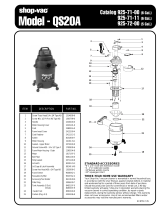 Shop Vac QS20A Owner's manual
Shop Vac QS20A Owner's manual
-
Cornelius WCC1401-A Series User manual
-
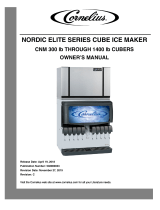 Cornelius Nordic Elite series User manual
Cornelius Nordic Elite series User manual
-
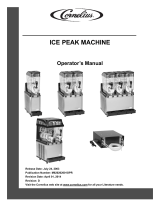 Cornelius Ice Peak User manual
Cornelius Ice Peak User manual
-
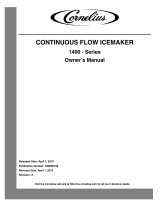 Cornelius 1400 User manual
Cornelius 1400 User manual
-
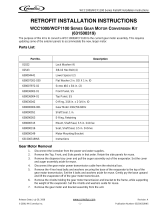 IMI Cornelius, Inc. WCF1100 Installation guide
IMI Cornelius, Inc. WCF1100 Installation guide
-
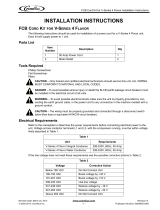 Cornelius FCB Cord Kit Installation guide
Cornelius FCB Cord Kit Installation guide
-
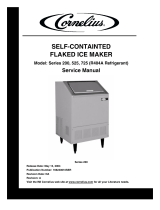 Cornelius AF–525–P–SC50R User manual
Cornelius AF–525–P–SC50R User manual
-
ASI 0363 Installation guide














































